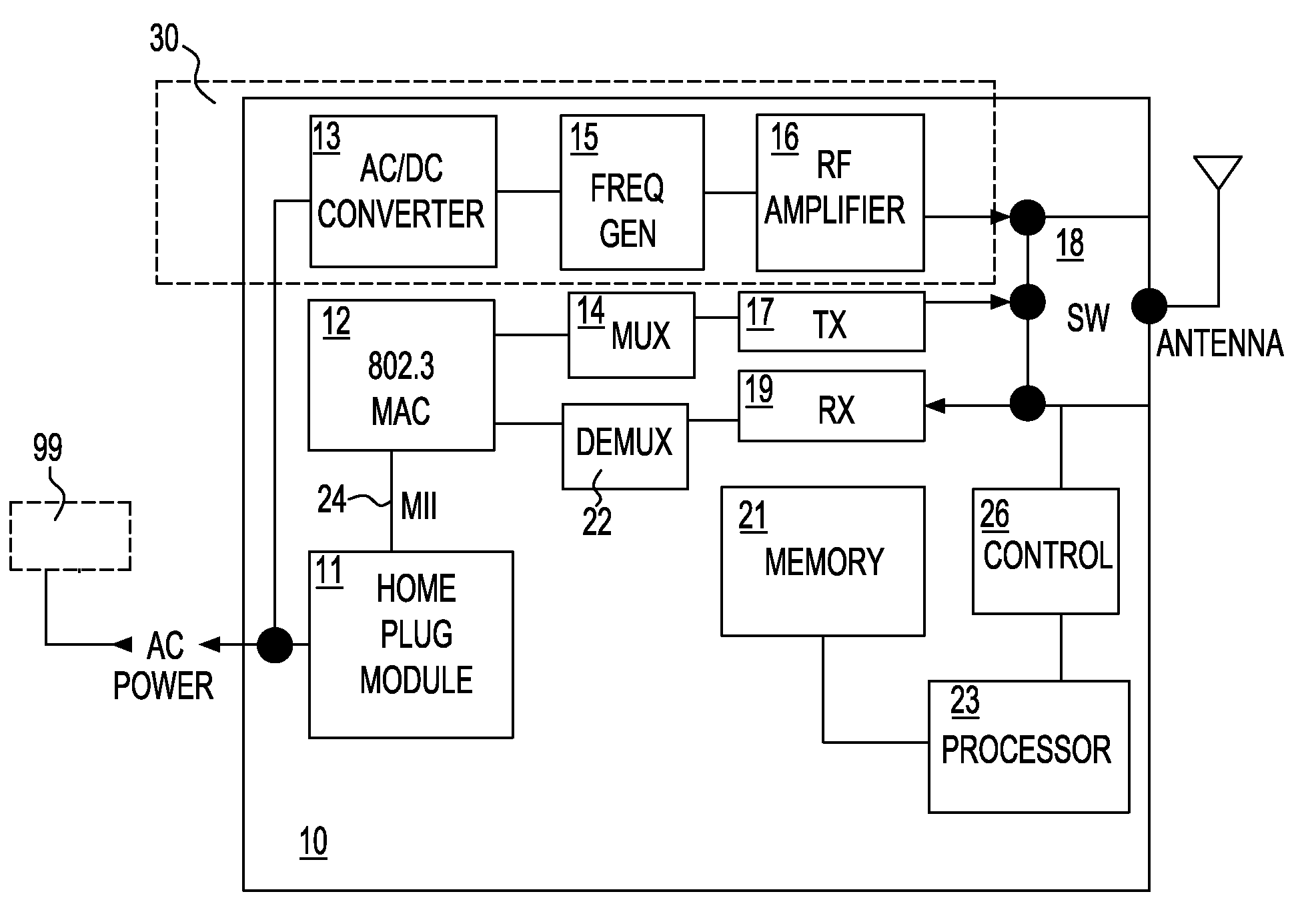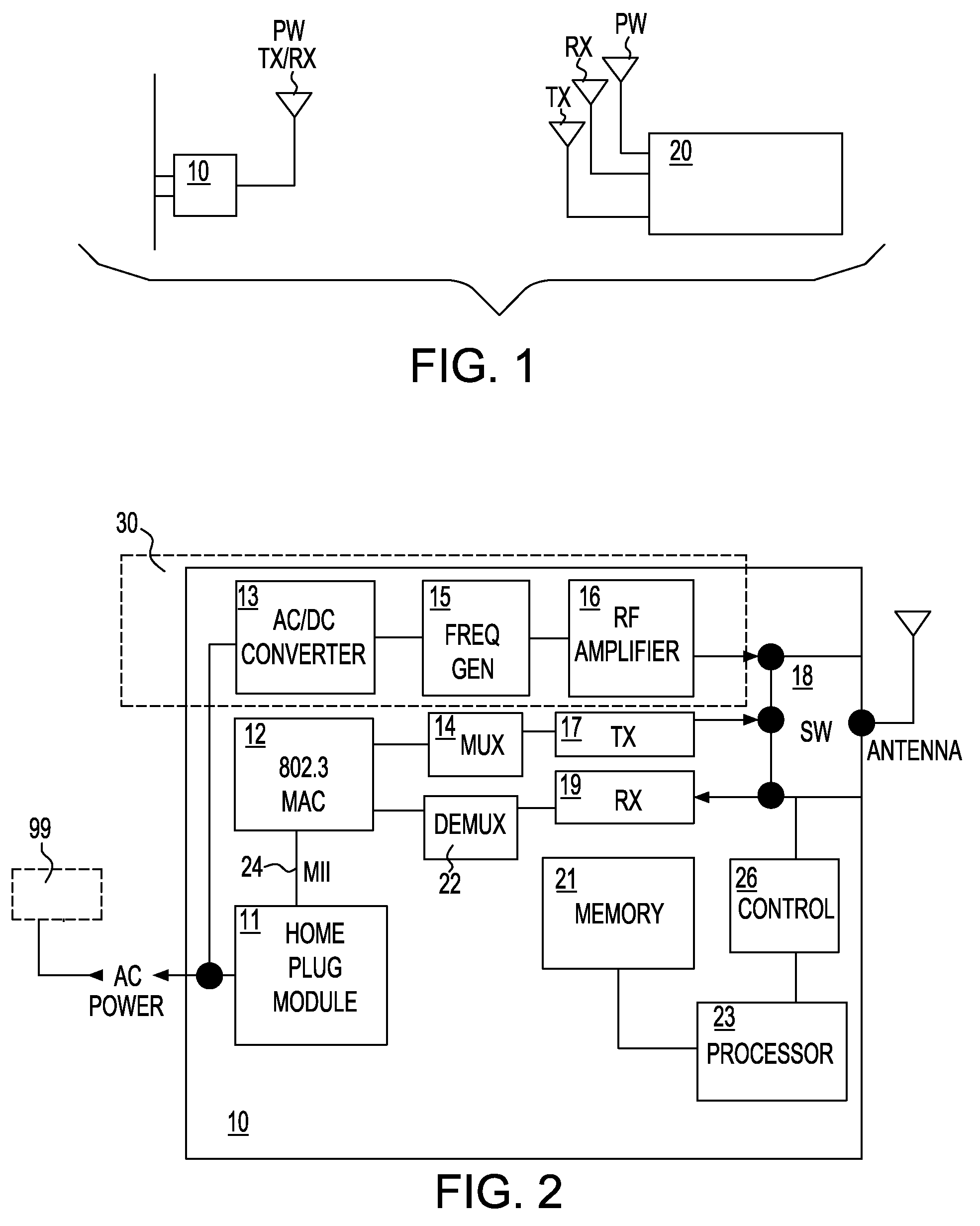Intelligent wireless power charging system
a wireless power charging and intelligent technology, applied in electromagnetic wave systems, transmission, substation equipment, etc., can solve the problems of insufficient capacity, inability to power existing wireless devices such as cell phones, portable computers, and inability to solve wire congestion problems,
- Summary
- Abstract
- Description
- Claims
- Application Information
AI Technical Summary
Benefits of technology
Problems solved by technology
Method used
Image
Examples
second embodiment
[0078]In a second embodiment, the invention is designed for use with wireless devices which are demanded for semi-active data communication. In this example, two HomePlug® adaptors 10A and 10B are implemented as shown in FIG. 6. A first HomePlug® is served as the master adaptor 10A used mainly for data communication. The second adaptor 10B is called the slave adaptor is mainly used for power transmission. Therefore the wireless device 20 should be located within a certain range of two adaptors such that it can receive simultaneous transmissions. This “dual plug” (master and slave plug) system provides low-noise to the wireless device, as the power charging signals and data signals are from different adaptors.
[0079]FIGS. 7A and 7B depict two flow chart diagrams implementing respective state-machine control of two home adaptors operating according to a second embodiment of the invention. To keep power charging more effectively, the wireless device must first be placed within a certain...
third embodiment
[0082]the invention is depicted in FIG. 8 wherein two adaptors are employed and two batteries are installed in the wireless device 20. This configuration may be advantageously employed for highly active wireless devices. The data traffic is very busy and there is almost no standby mode for battery charging. The algorithm starts out by checking the effective power charge range. The wireless device sends a signal to the home adaptor plug and waits for a response 801. If the received signal is poor or not acceptable, 802 a visual or audible warning signal will be triggered 803 to warn the users. If the signal strength is acceptable the intelligent will start checking the primary battery level and determine whether it is higher than the lower level of an acceptable charge range. If the charge level is higher than a set lower level, then battery swapping is taking place 805, and immediately the primary battery is subjected to a charging operation 806. It will continue to charge the prima...
PUM
 Login to View More
Login to View More Abstract
Description
Claims
Application Information
 Login to View More
Login to View More - R&D
- Intellectual Property
- Life Sciences
- Materials
- Tech Scout
- Unparalleled Data Quality
- Higher Quality Content
- 60% Fewer Hallucinations
Browse by: Latest US Patents, China's latest patents, Technical Efficacy Thesaurus, Application Domain, Technology Topic, Popular Technical Reports.
© 2025 PatSnap. All rights reserved.Legal|Privacy policy|Modern Slavery Act Transparency Statement|Sitemap|About US| Contact US: help@patsnap.com



